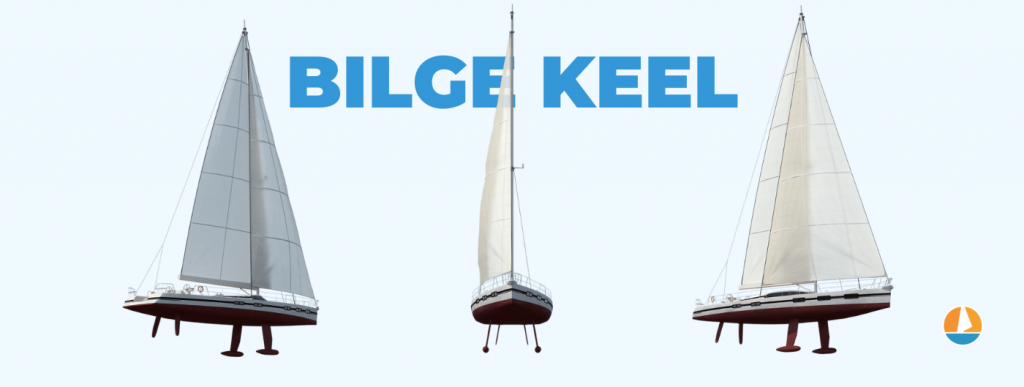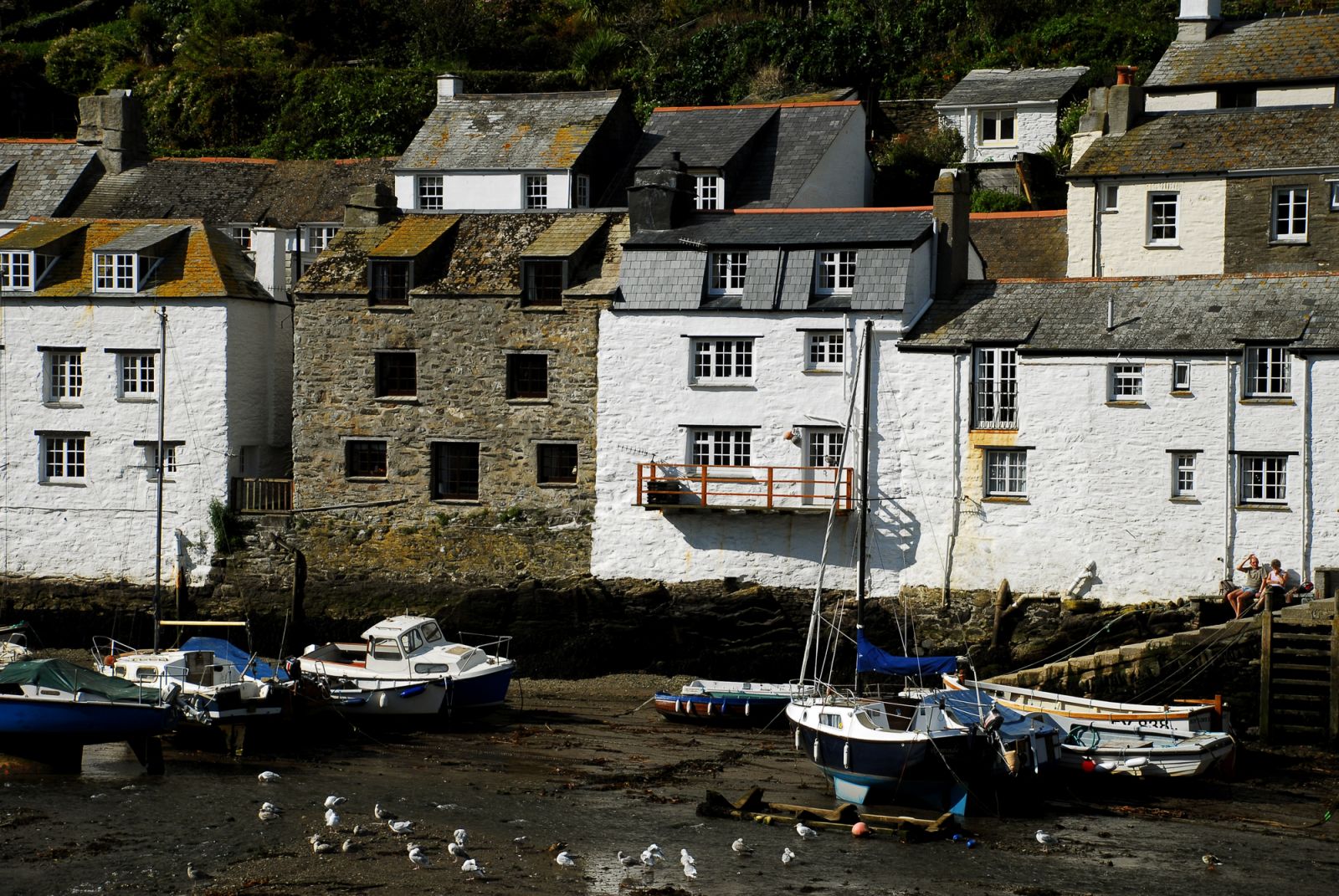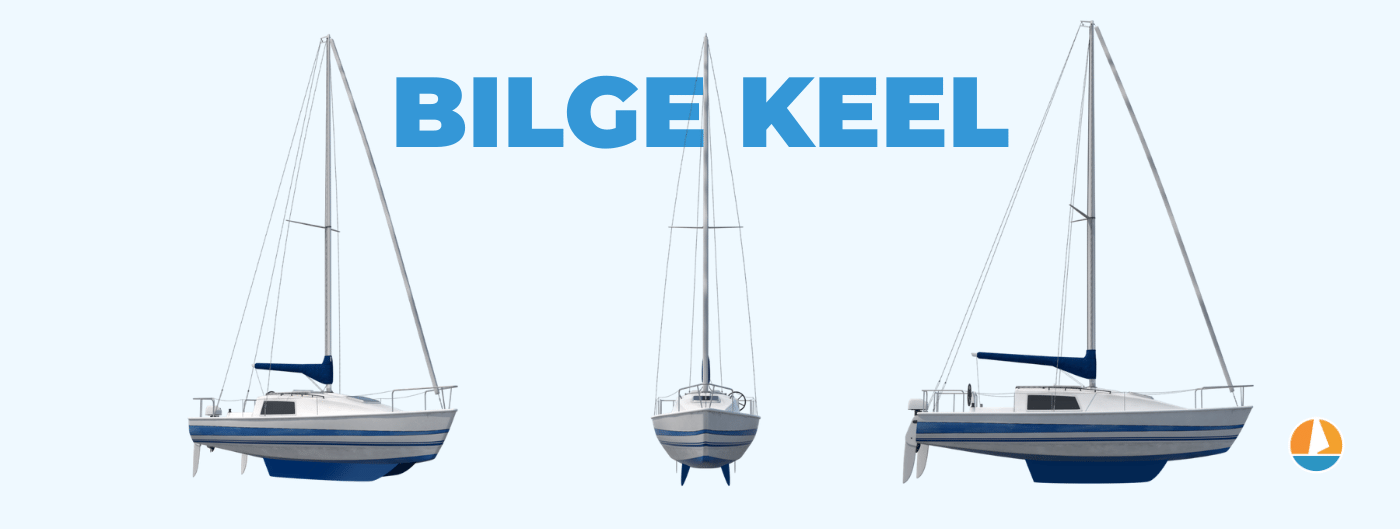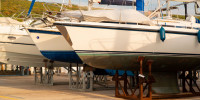Pros and Cons of the Bilge Keel (5 Surprising Benefits)
As far as sailboats go, you won't see that many bilge keel designs - at least compared to full or bulb keels. The design has a lot to offer though, despite its supposed drawbacks that are often just a historical stigma and aren't an issue in modern designs. So let's have a look at five biggest pros of bilge keels that might make you a fan after all.
So what are the advantages of bilge keels? The bilge keel allows you to park your boat on tidal beaches. It can stand upright when onshore for maintenance, making it easier to maintain. It has a lower draft resulting in better accessibility of shallow areas. It also reduces roll, resulting in more comfort on board.
Let's have a closer look at these so that you understand all their possible applications.

Closer Look At Bilge Keel Design
First of all, let's define a bilge keel because it is one of those terms oftentimes used wrongly. Generally, a bilge keel is simply nothing but a series of fins on the bottom of the hull that aspire to counter the boat's roll.
It is then, as you see, primarily a device with stability as its purpose. There are usually two bilge keels on a boat, one for each side, but you can sometimes encounter boats with four or even more bilge keels - though this is usually the case with large vessels, such as cargo ships.
The bilge keels are surprisingly plentiful on many boats, be it private or commercial vessels, since stability is often lacking on motorboats and this is an elegant, simple and sturdy solution. The fins aren't large in width, not protruding outwards much, so construction and use wise, it is a non-demanding design.
On sailboats though, the story is a bit different. Since the bilge keel's function there is not just that of a stabilizing device, but also has to fulfill the function of a keel, they tend to be longer, resulting in legs of sorts.
Also, I have yet to see a bilge keel sailboat with more than two keels, as can be the case with motorboats.
The sailboat bilge keels are also narrower, measuring from back to front.
If you are still uncertain about the form of this design, check out our article about various keel types that talks more in depth about this topic and also mentions the bilge keels.
Check our overview of all keel types, including diagrams.
And that brings us to the first advantage.

Bilge Keels Can Be Safely Beached
Given the length of sailboat bilge keels, and the fact that they actually go beyond the lowest point of the hull, a boat with bilge keels can stand upright on flat surfaces. This benefit is known by the manufacturers, so the keels are constructed sturdily enough so that this will be possible without the fear of the keels breaking off.
In fact, if you google a 'bilge keel sailboat', most of the images you will encounter are those of beached boats - this feature is just that awesome.
The benefit here is undoubtable. The ability of a boat to stand upright while aground is something that extends your possibilities exponentially.
Your boat can stand flat on a beach if that is where you decide to spend the night. This is something many keelless boats, or those with keels that are retractable, take advantage of. And it is something that makes a sailor's life much easier, especially in low tide areas.
If you are a beginner and are rightfully afraid of anchoring, especially in areas with unfavorable seabed, imagine all those fears vanishing. Not a bad thought.
The ability to park the boat on beaches when the tide is low, with no need for anchoring or marinas, makes this a popular choice in places with shallow waters. It also makes for substantially calmer nights.
But the benefits extend beyond sailing itself. A bilge keel also means that when you need to store the boat on shore, whether for the sad, off-season times or for repairs, you will have a way easier time than the fin keel folks. No need for legs to hold it in place, also, gone are the worries that the external legs haven't been fastened well and your boat will fall over.
This can reduce your aground costs significantly, whether you are in a marina or store the boat in your garden.
The same thing goes for transportation, as trailering a boat that, on its own, stands upright, is much easier and eventually also cheaper, than if you have to support it externally.

Bilge Keels Have a Shallow Draft
A definite advantage of a bilge keel design is the lower draft. A lower draft will come in handy of course when sailing in shallow areas, like the British coastal waters, when going on lakes or the occasional river.
When cruising through coastal waters, the ability to care less about the draft adds to one's peace of mind. And anchoring becomes a bit easier since you can afford to venture into shallower arrears close to the shore, which makes finding a good spot for the anchor and attaching the boat to the shore with lines easier.
Then there are marinas with limited depth, which effectively disqualifies some boats from entering.
But just as was the case with the boat's ability to stand on its own, the shoal draft benefits don't end there - when ashore, these boats are easier to maintain, both for less need of support and for the fact that you can reach the hull easier without much scaffolding. Putting that fresh coat of antifouling paint on your boat just became much easier.
The same goes for transportation - if you want to trailer your sailboat, it is much easier to do so when the boat is shorter in height.
All in all, the advantages of a lower draft are a chapter of its own, no need to explore it further here. If you like what you are reading, have a look at our article about boats with lifting keels, the ultimate solution when it comes to shallow draft. It explains the benefits that mostly apply in bilge keel designs too.
Learn everything there is to know about lifting keels
Of course, just like is the case with bilge keels, there are almost always performance or functionality drawbacks when it comes to shoal draft designs, so one has to weigh the pros and cons.
But if you live in an area or sail in a way that could use the lower draft, look into bilge keels for sure. As any sailor in such an area will confirm, the benefits tend to outweigh the drawbacks.
Bilge Keels Provide More Roll Stability
As mentioned in the beginning, bilge keel, as a design, came to existence for the purpose of stabilizing the roll. The fins simply act as a counter to the rolling motion.
And although this function is most taken advantage of on motorboats, where the narrower keels oftentimes run alongside the whole hull, the bilge keels on sailboat have a similar effect.
So when it comes to comfort onboard, you will see a definite improvement. Of course, many sailors enjoy all the rolling motion that comes with sailing, but when it is time to use the heads, cook lunch, or basically do anything where a bit more stability is welcome, one will certainly appreciate the bilge keel.
So given all these benefits, why are there not that many bilge keelboats around?
Well, one of the biggest reasons for owning one is if you live in an area with large tides and a coastline that can take an advantage of them. Which makes this whole thing mostly a British matter.
Or French. But the French historically seem to prefer lifting keels a bit more, so the bilge keel tradition isn't there as much.
Then there is the fact that you won't see bilge keels on larger boats. They are the most popular in models around 20 - 30 feet, so if you prefer something bigger, you are almost always excluded from this design choice.
And lastly, there is the performance stigma. Which is where things get a bit unfair. A bilge keel design has way more wetted surface than a fin keel, for instance, so your speed will suffer.
Also, although rolling motion is reduced, unfortunately, so is the stability, since bilge keels simply don't reach as far down.
But the modern designs are way better performance-wise than what used to be the case years ago. The issue is that the case years ago was so drastic that the stigma is still carried to this day.
Bilge keel boats were for the slow folk, fishermen, who cared for stability and the ability to beach their boat when the day is over - and not for performance. In the minds of sailors, a bilge keel means a slow, ill-performing boat.
Conclusion
All in all though, unless you are a racer or a speed cruiser, you don't have to worry about performance. That is if you stick with the modern designs. So if the benefits sound good to you and you know you could take good advantage of them, go for it.
Did you find the answer to your specific question?
👍 45 👎 1


Comments
Clinton Morton
Hello Matej
Thank you for taking the time to put this webpage on net. I found it very informative. It was what I was looking for. Thank you 👍
Clinton Morton
Toowoomba QLD
Stan
A boat with bilge keels does not have a bigger whetted surface. A finn keel of they same ballast would have to be twice as deep. When a bilge keel boat heels the keel becomes more effective in reducing leeway where a finn keel becomes less effective at reducing leeway.
The leeward keel rises in the water and becomes more effective in righting the boat.
Donal
Impossible page to read with the amount of pop ups. Good luck !!
Leave a comment